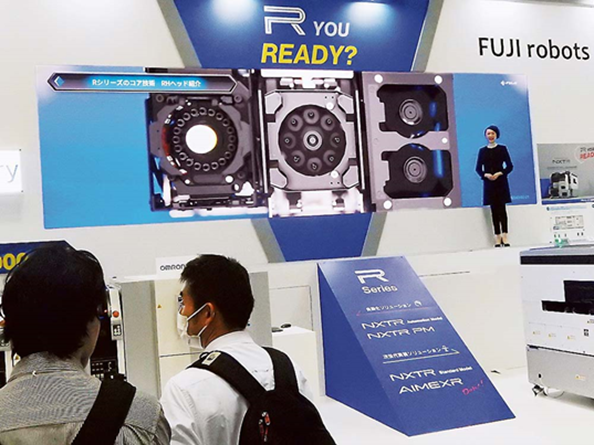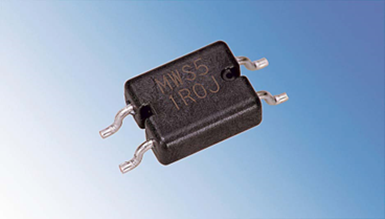ASIA ELECTRONICS INDUSTRYYOUR WINDOW TO SMART MANUFACTURING
SMDs Chart Growth Course Despite Short-Term Headwinds
Today’s surface mount technology (SMT) continues to advance in functions. Against this backdrop, the technologies behind chip component or surface mount device (SMD) development also accelerate. Specifically, new SMDs promote miniaturization and higher functionalities of advanced 5G smartphones, IoT terminals, automotive ECUs, and various modules as they are mounted at higher densities.

SMD: Poises for Steady Growth Globally
Global demand for SMDs continued to grow over the medium to long term. This was driven by the miniaturization trend and higher performance of electronic devices. Specifically, demand was sluggish in the first half of 2020 due to the spread of coronavirus infections. However, the demand trend reversed course after summer, and has since increased at a faster-than-expected pace.
In particular, from 2021 to 1H 2022, the growth of SMD accelerated due to the increasing functionalities installed in automobiles, industrial equipment, smartphones, and wearable devices. In addition, from 2021 onwards, other factors further bolstered the orders for SMDs. For example, the supply chain disruption caused by the coronavirus infections and the move by component users to build up inventories for their Business Continuity Plan (BCP) amid the shortage of semiconductors and components.
Beginning fall of 2022, a slowdown in SMD orders was noted. Mainly, these resulted from the global decline in demand for ICT equipment, sluggish Chinese economy, and less aggressive capital investments. In 2023, orders for SMDs showed further signs of adjustment. Specifically, demand for industrial equipment is not expected to fully recover until the spring of 2024.
However, despite short-term fluctuations, global demand for SMDs is expected to continue charting the growth course. Overall, the number of SMDs installed per device will further increase. Specifically, this is attributed to higher production of electronic devices and automobiles, the increasing sophistication and performance of electronic devices, and the advancement of ADAS/autonomous driving technology and electrification in automobiles. Moreover. SMD manufacturers will continue to invest aggressively in new product development and production capacity expansion to meet the demand for smaller, more sophisticated, and higher-performance electronic devices.
SMD Product Trends: Higher Demand from Automotive and Smartphone
Capacitors
In terms of SMD product, multilayer ceramic capacitors (MLCCs) will see progress for use in automotive applications. Specifically, product development will focus on low-loss, three-terminal, high resonance frequency, high heat-resistant, high-voltage, and high-capacitance features.
For smartphone applications, higher-capacitance 0402-size and 0603-size products are being developed. Also, capacitance is being increased to 0.1μF for 0201-size products. For board-embedded applications, ultra-thin feature to a thickness level of 0.064mm is underway.
In addition to the standard electrolyte type, polymer type and hybrid type (conductive polymer hybrid aluminum electrolytic capacitor) are under active development. Particularly, the hybrid type is characterized by low ESR, high reliability, and high withstand voltage. Also, its adoption in ECUs and other applications is rapidly increasing with 150°C-compatible products being introduced.
The demand for hybrid capacitors has remained strong in recent years due to robust demand in the automotive industry. Moreover, manufacturers are actively working to increase production capacity for hybrid capacitors.
Inductors
Inductors are also undergoing technological innovation, especially for 5G and in-vehicle applications. Manufacturers are pursuing high-frequency inductor products that combine high-Q (quality factor), high-precision, and miniaturization. Specifically, high-Q inductors in the 0402-size are being developed. Power inductors for power supplies include ferrite wire-wound and ferrite multilayer types, as well as wire-wound, multilayer, and thin-film metal power inductors. In recent years, power inductors achieved miniaturization to 1608-size. For ECUs, heat resistance technology has advanced to 150°C, and 180°C-compatible products have also been developed.
Resistors
Among resistors, the development of products for ADAS/automated driving and electrified vehicles has been progressing. Also, efforts were focused on the development of ultra-small products for 5G smartphones and IoT terminals.
Moreover, the demand for 0603- and 0402-size products for 5G smartphones is expected to grow. In power circuits, low-resistance chips are used for current detection, and demand for metal plate types is growing, among others. There is also a trend toward miniaturization of modules with built-in components. The copper-plated connection method requires dedicated components with copper-plated electrodes. Moreover, chip resistors have been made ultra-thin to 0.13mm. For next-generation applications, 0201-size ultra-small chips have also been proposed.

In automotive applications, anti-sulfurated chip resistors are used in power supply peripheral circuits to prevent disconnection due to sulfurization. Also, anti-surge chip resistors are used in ECUs. High-current, high-power, and low-resistance power low-resistance chip resistors, in which the metal plate resistive element also serves as the product body, will also advance.
Crystal devices
For quartz devices, the pursuit of smaller and thinner products for 5G smartphones is advancing. Moreover, technological development is progressing for higher precision, lower noise, and higher frequency for the purpose of improving communication quality.
In ultra-compact crystal units for 5G smartphones, there is a shift from 1210- to 1008-size. Specifically, demand for 1008-size products is expected to continue to grow for 5G smartphones as well as for wearable terminal applications such as wireless earphones and smartwatches.
Temperature compensated crystal oscillators (TCXO) have also seen practical application in the 1612-size. Also, 1210-size products are also under development, thanks to thinner ceramic packages, miniaturization of crystal chips, and encapsulation technology.
The technology development of temperature sensors for automotive applications is also active. This includes a 1005-size chip NTC thermistor with an operating temperature range of -55 to +150°C and a maximum resistance of 100kΩ for mounting with conductive adhesive.




